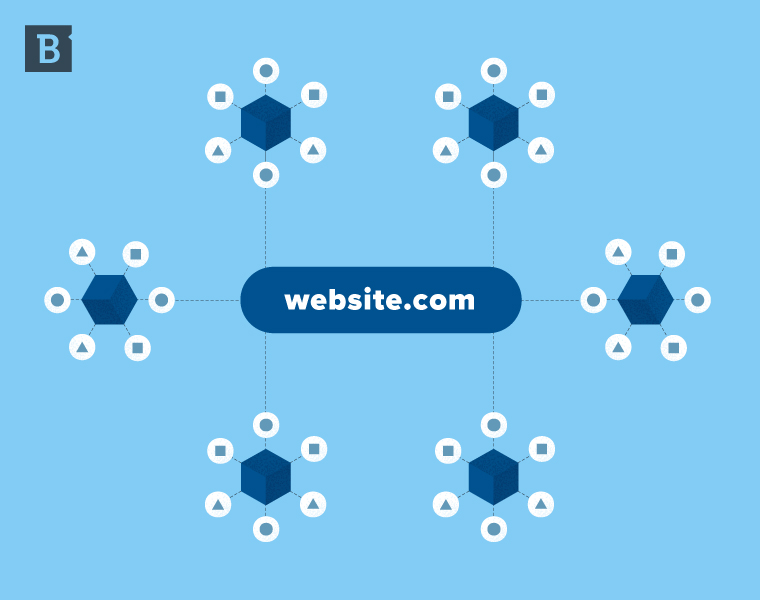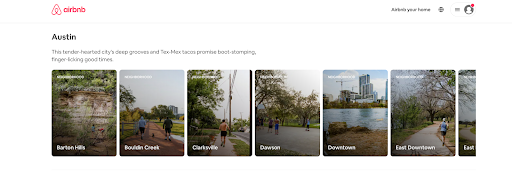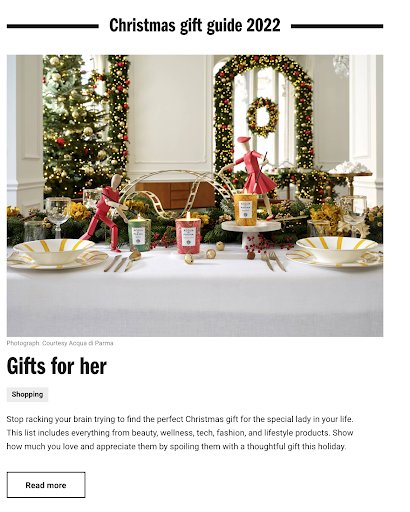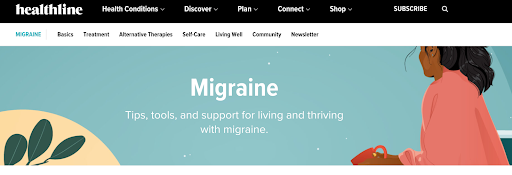Content management can be like herding cats. As soon as you improve engagement metrics for one piece of content, two others begin to lag behind the competition. To generate leads and grow traffic, you need two things: quality content marketing and somewhere for it to live. The environment in which your B2B content lives needs to be able to show readers content that is highly relevant to their search intent.
If you just put your content in chronological order, it will get buried quickly — valuable pieces and all. That’s where content hubs come in. By introducing a responsive design and a logical structure to your branded content, you can make it easier for readers to find what they’re looking for.

What Is a Content Hub?
If you’re a business stakeholder who has struggled with generating inbound leads, the phrase “content hub” might send a chill down your spine. First, you had to create individual pieces of content to fill your blog and social media pages … and now you have to create an entire hub page of relevant content? What does that even look like?
Let’s take a second to understand what we’re talking about here. A content hub is a curated collection of branded content related to a topic. That’s it! Not so scary now, huh?
But that definition is a little vague, so let’s see if we can get more specific.
A content hub is a central location for your branded content that readers can visit and find what they need, all in one place. They’re helpful for your marketing strategy because by organizing your content into logical categories, you’re making it easier for readers to find what they’re looking for — even if they don’t know exactly what that is.
The good news is that content hubs can be built on any budget, and they don’t have to include a ton of bells and whistles. In fact, the best content hubs are simple, clean and easy to navigate. Your content hub doesn’t need to be a complicated place — it just needs to be useful for your readers.
Content Hubs vs Websites: What’s The Difference?

A hub gives readers more freedom to find the content that is most valuable to them, in the form that they prefer. All the related content revolving around the hub is compiled and curated for readers.
This format gives more exposure to evergreen content and helps users find what they’re looking for faster. Additionally, hubs make it easier to provide value to readers at every stage of the buying journey. More on that later.
To further differentiate a hub from a website, it helps to understand what types of pages you won’t find on one. A hub is not a place for an “About Us” page, e-commerce, product or service landing pages, event announcements or press releases. It is, however, the place where you’ll find links to a detailed blog post, article or another resource that answers users’ queries. If the content is not immediately relevant to readers, it doesn’t belong in the hub page.
Great content can also link together multiple content hubs, forming a powerful web that’s perfectly optimized for search engines and user experience.

Types of Content Hubs
There are several types of content hubs, each with their own unique characteristics and purpose. The following are a few of the most effective:
1. Classic Hub and Spoke
Content hubs organize information around a main topic like blogs do, but they present this content in a more user-friendly way. When using the classic hub and spoke model, blogs are organized around a central pillar topic, with every new piece of content (spokes) added to the hub supporting this pillar in some way. Typically, this will translate into one page and up to 20 static subpages.
2. Content Library
Content libraries offer a more structured approach to organizing your content. Using this model, you’ll create one page that serves as a pillar page for all content related to the central topic (the library). This will then be linked to from subpages that each focus on different aspects of the topic in question. Finally, inside each subpage, there’ll be internal links to individual articles that tackle specific queries.
Here at Brafton, we’ve created several content libraries in the form of pillar pages. They’re a mix between a landing page and a blog post with one overarching and targeted subject. With our pillar page strategy, we’ve received 4x the traffic of a normal blog post, obtained 10x more newsletter subscriptions per page than an average blog, experienced lower bounce rates and had better organic results overall.
3. Topic Gateway
A topic gateway content hub is a hybrid of the two previous models. It combines a content library with individual articles and subpages, offering readers a central location for exploring your topic in-depth. Where a content library covers more broad terms, a topic gateway is best suited for long-tail keywords.
4. Content Database
A content database is a complete archive of all the content you’ve published. It’s essentially a collection of individual documents that can be organized by keyword, location or date. The best scenario to opt for this type of content hub is when you have a lot of existing content that you want to make available to readers during their browsing sessions.
5. Topic Matrix
A topic matrix is a way to organize content using subpages. It’s a type of navigation tool that lets you organize content by topic and then further break down each individual page into other categories. They’re optimal for sites with a high volume of information and new content, such as real estate or news websites.
How a Content Hub Supports SEO Strategy
An effective hub demonstrates that your brand understands the needs and interests of your target audience. Like a magazine, hub content takes a narrow topic and explores every nook and cranny within it, helping readers glean new insights, discover the latest trends and conduct research in a meaningful way.
From an SEO perspective, a content hub lends authority to its brand. When a user arrives at a hub, they can instantly see the topics and themes for which your brand is a thought leader. Moreover, consistent quality in your content marketing will help pages rank higher in organic search, driving site traffic and improving visibility across multiple channels.
If the content is not immediately relevant to readers, it doesn’t belong in the hub.
Capturing Valuable Readers
These days, brands generate enormous amounts of digital assets. Some pieces are designed to attract new readers, others to engage buyers who are further down the sales funnel. Content marketers understand that each category of reader is important, but each has a distinct intention for visiting a website.
Moreover, 88% of B2B buyers explore a company’s website to thoroughly research products and services before they commit to a solution, as found in research by Garner. A hub gives them the option to dive into pieces on a specific theme, challenge or trend to build a base knowledge before interacting with the sales department. This can improve the quality and quantity of inbound leads by automating a key part of the discovery process.
Fostering a Community
Social media can be a great place to build a community of readers and buyers. However, brands have very little control over social media platforms. You can create an excellent page and fill it with engaging content, but a single algorithm change could make it difficult for users to find your posts. A hub puts you in control, giving you the ability to grow a dedicated readership that trusts the content your brand produces.
Furthermore, 53% of buyers say it’s important for new and small companies to produce thought leadership articles in order to attract clients, according to Edelman’s B2B Thought Leadership Impact Study in collaboration with LinkedIn. A hub allows you to put your brand’s internal champions at the forefront. These are the people who make your brand special, and their insights demonstrate topical authority, expertise and passion.
Subscribe to
The Content Marketer
Get weekly insights, advice and opinions about all things digital marketing.
Thanks for subscribing! Keep an eye out for a Welcome email from us shortly. If you don’t see it come through, check your spam folder and mark the email as “not spam.”
Optimizing Content Experience
These days, competition for readers is substantial. Brands across the globe develop tailored content at an almost unbelievable rate. Internet users consume 97,200 hours of content on Netflix, watch 3,000,047 videos on Youtube and search 4,000,002 times on Google — per minute, revealed SmartInsights. In other words, it’s no longer enough to simply write an amazing article or record an engaging video. The broader context in which your content lives is much more important than it was even a few years ago.
To stand out among the billions of gigabytes of data published online each day, brands have to give users a content experience that is not only useful but also enjoyable. In fact, you have around 50 milliseconds to make a good first impression, and if your website doesn’t engage users immediately, they will click away.
According to Überflip, content experience can be defined as: “The environment in which your content lives, how it’s structured, and how it compels your prospects and customers to engage with your company.”
Content experience is a lot like a dining experience. You’d likely rather enjoy a meal on a rooftop patio than in the back alley by the trash cans. Content quality is vital, and so is the quality of the environment in which readers engage with it.
A great hub places your quality content in an environment that is visually pleasing, well-organized and expertly curated.

Content Hub Examples: 5 Brands That Nail the Strategy
Sometimes it’s easier to understand a concept when you see it in action. Here are 5 brands that have created beautiful examples of the form:
1. Airbnb’s Locations Page — Classic Hub and Spoke
As part of their content marketing strategy to build user trust and strengthen the brand, Airbnb created a locations page that highlights the best places to stay in various cities around the world. The page is organized by city — but it doesn’t stop there. Each destination has its own dedicated section that includes maps, neighborhood guides and all available listings in that particular area.

2. Think With Google — Content Library
Unsurprisingly, Google has one of the best hubs around. The site provides B2B and B2C marketers with the latest insights and trends. From SEO tips to in-depth reports, Think With Google has content on just about every marketing topic imaginable. Users can subscribe to a free newsletter to receive a personalized stream of content that aligns with their unique interests.

3. Time Out’s 2022 Christmas Gift Guide — Topic Gateway
Time Out’s Christmas gift guide is a great example of how to create an effective topic gateway. By organizing the gifts by category, the site provides users with a clear path to navigate the page. Users can click to view the full list or simply skim through the site’s content to find relevant items they need for their personal network.

4. LemList’s Cold Email Template Library — Content Database
LemList’s cold email template content hub provides users with a well-organized library of resources that they can use to craft their own cold emails. By organizing the templates by category, features and type, LemList provides users with an easy way to find relevant templates without having to sift through a large number of files.

5. Healthline’s Conditions — Topic Matrix
Healthline’s disease-specific topic matrix features a number of well-organized categories, including treatments and mental health resources, as well as subcategories for more specific information. The content changes depending on the condition and users can even sign up for a dedicated newsletter.

A hub can take your brand to a whole new level. It combines a refined content experience with thought leadership, SEO best practices and marketing automation. Readers can find content that’s relevant to their interests, share it with the community and engage with your brand meaningfully.
Editor’s Note: Updated December 2022.



